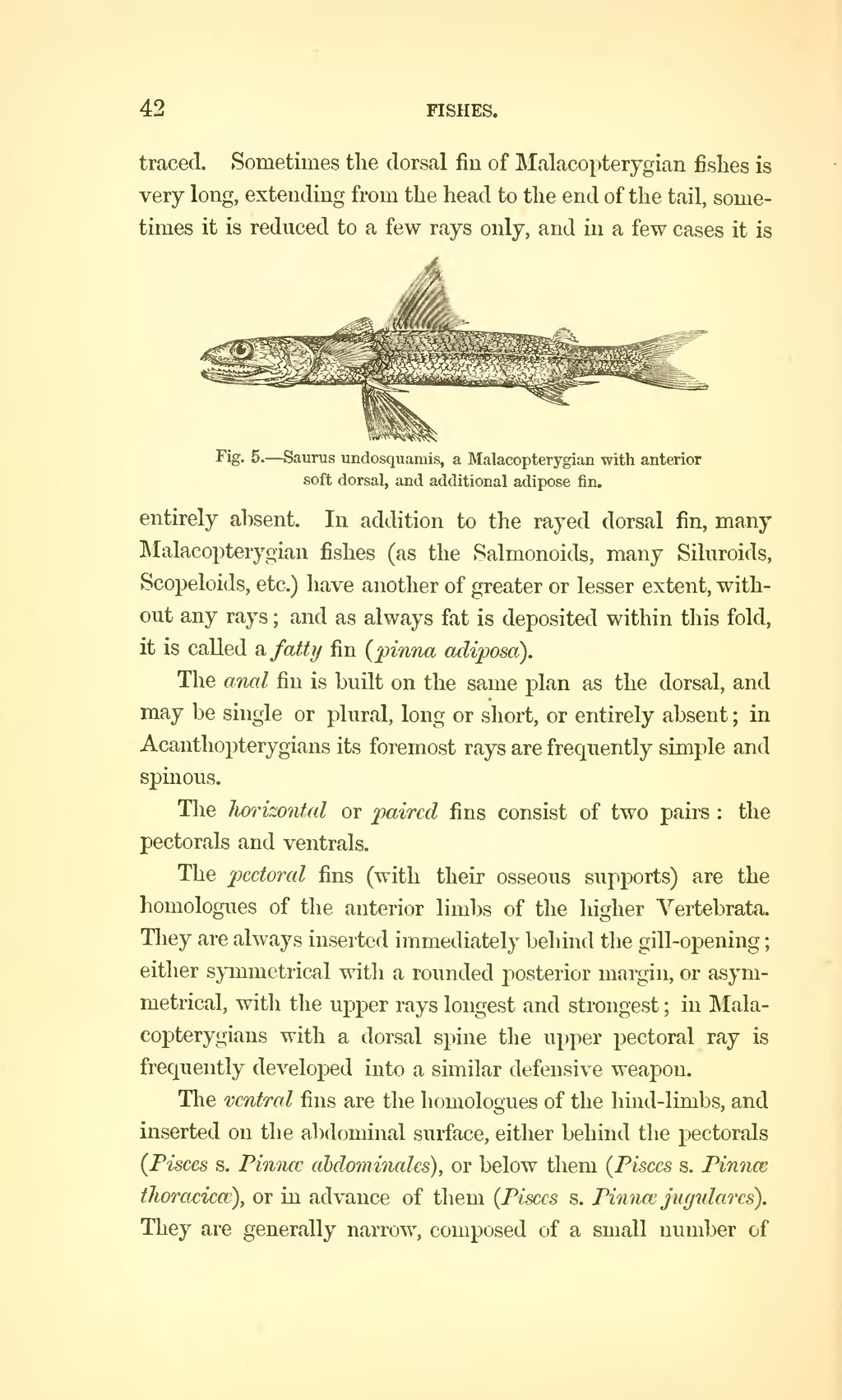traced. Sometimes the dorsal fin of Malacopterygian fishes is very long, extending from the head to the end of the tail, sometimes it is reduced to a few rays only, and in a few cases it is

Fig. 5.—Saurus undosquamis, a Malacopterygian with anterior soft dorsal, and additional adipose fin.
entirely absent. In addition to the rayed dorsal fin, many Malacopterygian fishes (as the Salmonoids, many Siluroids, Scopeloids, etc.) have another of greater or lesser extent, without any rays; and as always fat is deposited within this fold, it is called a fatty fin (pinna adiposa).
The anal fin is built on the same plan as the dorsal, and may be single or plural, long or short, or entirely absent; in Acanthopterygians its foremost rays are frequently simple and spinous.
The horizontal or paired fins consist of two pairs: the pectorals and ventrals.
The pectoral fins (with their osseous supports) are the homologues of the anterior limbs of the higher Vertebrata. They are always inserted immediately behind the gill-opening; either symmetrical with a rounded posterior margin, or asymmetrical, with the upper rays longest and strongest; in Malacopterygians with a dorsal spine the upper pectoral ray is frequently developed into a similar defensive weapon.
The ventral fins are the homologues of the hind-limbs, and inserted on the abdominal surface, either behind the pectorals (Pisces s. Pinnæ abdominales), or below them (Pisces s. Pinnæ thoracicæ), or in advance of them (Pisces s. Pinnæ jugulares). They are generally narrow, composed of a small number of
